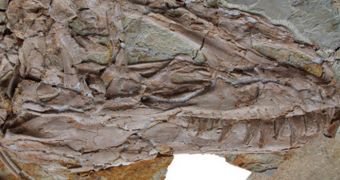Tyrannosaurus Rex's family may have just been expanded by a new member, researchers with the American Museum of Natural History (AMNH), in New York City, say. They were part of a time that discovered a new species of large dinosaur in northeastern China.
The area is known for the high amount of fossils it contains, covering numerous periods and countless species, some of which have never been seen before. Apparently, this portion of what is now China was once an incredibly diverse hotspot for numerous species.
While searching for bone fragments, investigators came across the remains of a species of dinosaurs that carried a large and rich plumage. The fossil is believed to belong to a creature that lived more than 125 million years ago.
The creature may have weighed more than 1,400 kilograms (3,086 pounds), and may have measured up to 9 meters (30 feet) from nose to the tip of its tail. Scientists were able to find bone fragments from one adult and two young specimens, which gave them sufficient data to compile these values.
Details of the investigation appear in the April 5 issue of the top journal Nature, Science News reports. “It changes the way we really look at things – from these big, scaly, Jurassic Park animals to ones that were big and fluffy,” AMNH paleontologist Mark Norell explains.
All three fossils were analyzed carefully, and the researchers determined that all belonged to the same species. In addition, they also established that all of the animals were Tyrannosaurs, and therefore cousins with T. Rex.
According to the study, these dinosaurs had feathers about 15 centimeters (6 inches) long. They are about a quarter the weight of their larger cousins, T. Rex. Experts decided to dub the new species Yutyrannus hauli, which means “beautiful feathered tyrant” in Latin.
The research team also included Corwin Sullivan, a paleontologist with the Institute of Vertebrate Paleontology and Paleoanthropology, at the Chinese Academy of Sciences in Beijing.
The new study also brought into question the role of feathers in dinosaur evolution. Lately, experts have begun discovering that most of the giant lizards were covered with feathers, for unknown reasons. Determining why this was the case could allow us to understand dinosaurs better.

 14 DAY TRIAL //
14 DAY TRIAL //